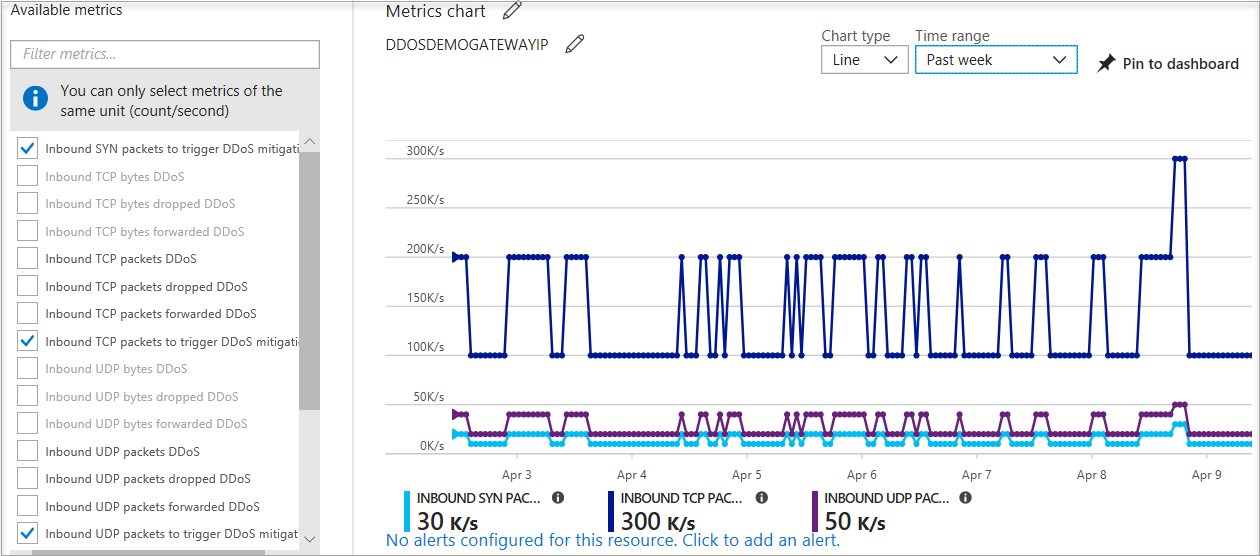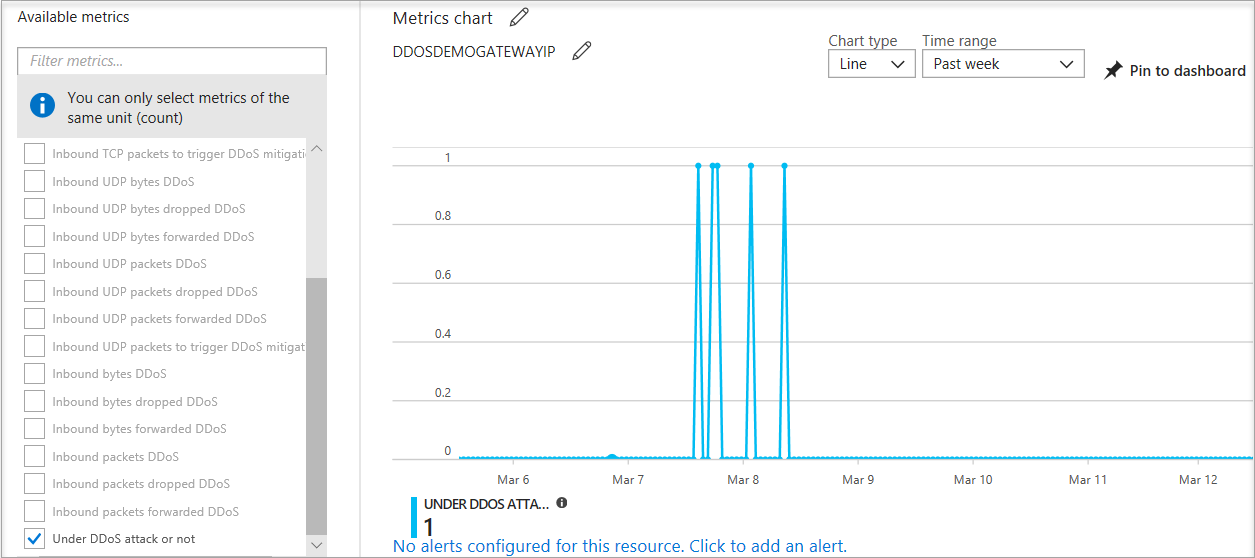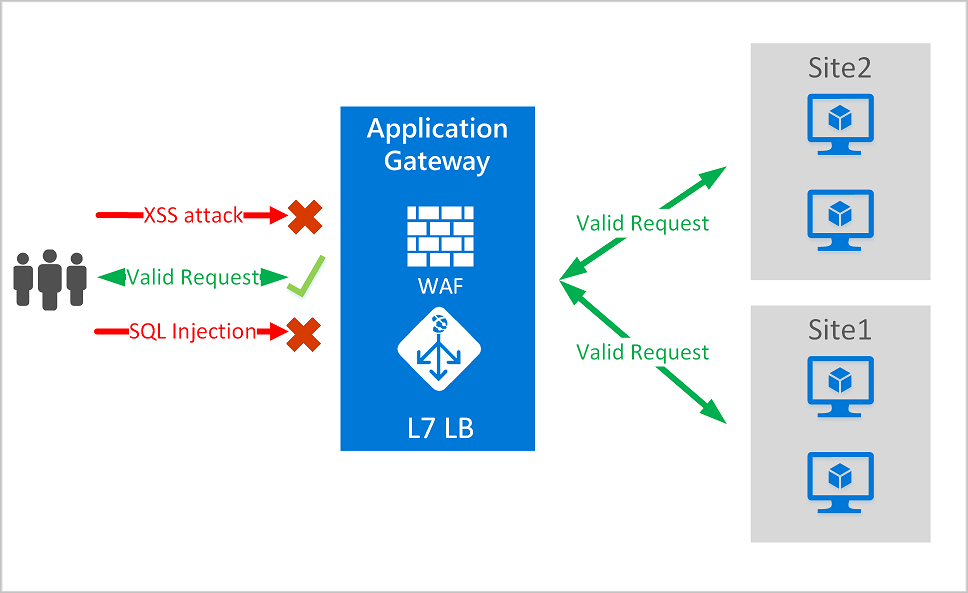Deploy Azure DDoS Protection by using the Azure portal
Distributed Denial of Service (DDoS)
A denial of service attack (DoS) is an attack that has the goal of preventing access to services or systems. A DoS attack originates from one location. A distributed denial of service (DDoS) attack originates from multiple networks and systems.
DDoS attacks are some of the largest availability and security concerns facing customers that are moving their applications to the cloud. A DDoS attack tries to drain an APIs or application's resources, making that application unavailable to legitimate users. DDoS attacks can be targeted at any endpoint that is publicly reachable through the internet.
DDoS implementation
Azure DDoS Protection, combined with application design best practices, provide defense against DDoS attacks. Azure DDoS Protection provides the following service tiers:
Network Protection. Provides mitigation capabilities over DDoS infrastructure Protection that are tuned specifically to Azure Virtual Network resources. Azure DDoS Protection is simple to enable, and requires no application changes. Policies are applied to public IP addresses associated to resources deployed in virtual networks. Real-time telemetry is available through Azure Monitor views during an attack, and for history. Rich attack mitigation analytics are available via diagnostic settings. Application layer protection can be added through the Azure Application Gateway Web Application Firewall (WAF). Protection is provided for IPv4 and IPv6 Azure public IP addresses.
IP Protection. DDoS IP Protection is a pay-per-protected IP model. DDoS IP Protection contains the same core engineering features as DDoS Network Protection. However, there are value-added services like DDoS rapid response support, cost protection, and discounts on WAF.
DDoS Protection protects resources in a virtual network. Protection includes virtual machine public IP addresses, load balancers, and application gateways. When coupled with the Application Gateway WAF, DDoS Protection can provide full layer 3 to layer 7 mitigation capabilities.
Types of DDoS attacks
DDoS Protection can mitigate the following types of attacks.
Volumetric attacks. These attacks flood the network layer with a substantial amount of seemingly legitimate traffic. They include UDP floods, amplification floods, and other spoofed-packet floods.
Protocol attacks. These attacks render a target inaccessible, by exploiting a weakness in the layer 3 and layer 4 protocol stack. Attacks include SYN flood attacks, reflection attacks, and other protocol attacks.
Resource (application) layer attacks. These attacks target web application packets, to disrupt the transmission of data between hosts. Attacks include HTTP protocol violations, SQL injection, cross-site scripting, and other layer 7 attacks.
Azure DDoS protection features
Some of Azure DDoS protection features include:
Native platform integration. Natively integrated into Azure and configured through portal.
Turnkey protection. Simplified configuration protecting all resources immediately.
Always-on traffic monitoring. Your application traffic patterns are monitored 24 hours a day, 7 days a week, looking for indicators of DDoS attacks.
Adaptive tuning. Profiling and adjusting to your service's traffic.
Attack analytics. Get detailed reports in five-minute increments during an attack, and a complete summary after the attack ends.
Attack metrics and alerts. Summarized metrics from each attack are accessible through Azure Monitor. Alerts can be configured at the start and stop of an attack, and over the attack's duration, using built-in attack metrics.
Multi-layered protection. When deployed with a WAF, DDoS Protection protects both at the network layer and the application layer.
Let's look in a bit more detail at some DDoS Protection key features.
Always-on traffic monitoring
DDoS Protection monitors actual traffic utilization and constantly compares it against the thresholds defined in the DDoS Policy. When the traffic threshold is exceeded, DDoS mitigation is initiated automatically. When traffic returns below the thresholds, the mitigation is stopped.

During mitigation, traffic sent to the protected resource is redirected and several checks are performed.
- Ensure packets conform to internet specifications and aren't malformed.
- Interact with the client to determine if the traffic is potentially a spoofed packet (e.g: SYN Auth or SYN Cookie or by dropping a packet for the source to retransmit it).
- Rate-limit packets if no other enforcement method can be performed.
DDoS protection drops attack traffic and forwards the remaining traffic to its intended destination. Within a few minutes of attack detection, you're notified using Azure Monitor metrics. By configuring logging on DDoS Protection telemetry, you can write the logs to available options for future analysis. Metric data in Azure Monitor for DDoS Protection is retained for 30 days.
Adaptive real-time tuning
The Azure DDoS Protection service helps protect customers and prevent impacts to other customers. For example, if a service is provisioned for a typical volume of legitimate incoming traffic that is smaller than the trigger rate of the infrastructure-wide DDoS Protection policy, a DDoS attack on that customer’s resources might go unnoticed. More generally, the complexity of recent attacks (for example, multi-vector DDoS) and the application-specific behaviors of tenants call for per-customer, tailored protection policies.

Attack metrics, alerts, and logs
DDoS Protection exposes rich telemetry via the Azure Monitor tool. You can configure alerts for any of the Azure Monitor metrics that DDoS Protection uses. You can integrate logging with Splunk (Azure Event Hubs), Azure Monitor logs, and Azure Storage for advanced analysis via the Azure Monitor Diagnostics interface.
In the Azure portal, select Monitor > Metrics. In the Metrics pane, select the resource group, select a resource type of Public IP Address, and select your Azure public IP address. DDoS metrics are visible in the Available metrics pane.
DDoS Protection applies three autotuned mitigation policies (SYN, TCP, and UDP) for each public IP of the protected resource, in the virtual network that has DDoS enabled. You can view the policy thresholds by selecting the Inbound [SYN/TCP/UDP] packets to trigger DDoS mitigation metrics.

The policy thresholds are autoconfigured via machine learning-based network traffic profiling. DDoS mitigation occurs for an IP address under attack only when the policy threshold is exceeded.
If the public IP address is under attack, the value for the Under DDoS attack or not metric changes to 1 as DDoS Protection performs mitigation on the attack traffic.

Multi-layered protection
Specific to resource attacks at the application layer, you should configure a WAF to help secure web applications. A WAF inspects inbound web traffic to block SQL injections, cross-site scripting, DDoS, and other Layer 7 attacks. Azure provides WAF as a feature of Application Gateway for centralized protection of your web applications from common exploits and vulnerabilities. There are other WAF offerings available from Azure partners in the Azure Marketplace.

Even web application firewalls are susceptible to volumetric and state exhaustion attacks. Therefore, enable DDoS Protection on the WAF virtual network to help protect from volumetric and protocol attacks.
Deploying a DDoS protection plan
The key stages of deploying a DDoS Protection plan are as follows:
- Create a resource group
- Create a DDoS Protection Plan
- Enable DDoS protection on a new or existing virtual network or IP address
- Configure DDoS telemetry
- Configure DDoS diagnostic logs
- Configure DDoS alerts
- Run a test DDoS attack and monitor the results.